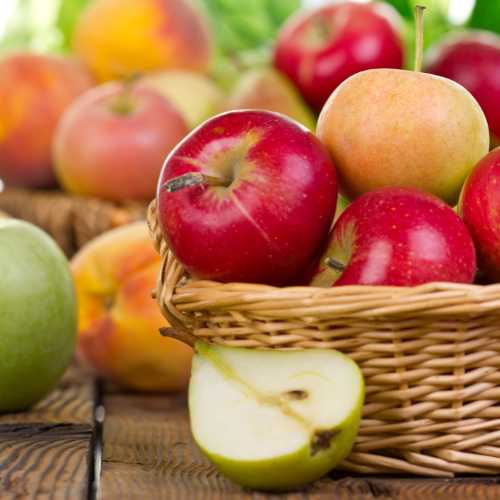

FINANCIAL HEALTH ARTICLES

The American Apple
Have you ever been asked what cuisine you would consider to be traditionally American? Most of our favorite foods, like spaghetti or tacos, originated in countries outside the United States: Italy, Latin America, or other foreign countries. While there may not be a single meal that defines the American food we eat today, our ability to thrive in a melting pot of flavors from all over the world may be the definition of what is truly American.
There is one player, however, that perfectly depicts the American food journey all on its own: the apple. Its origin in a far-off country and its diversity make it the epitome of a truly American food.
“Would you like an apple?” my brother asked, searching his cupboards for a small snack to share upon my unexpected visit. “That sounds great,” I replied. He pulled out a knife, cut the apple into quarters, and served it to me on a plate. He then brought over the salt shaker and put a dash of salt on his portion. Suddenly, I remembered our childhood days munching on fresh green apples off the tree with a dash of salt on the white flesh. My eyes widened as I realized what I had forgotten. “I don’t think I have salted an apple in years,” I exclaimed as I tried some small sprinkles on my next bite. It was so delicious!

Dating back over 400 years, apple trees were introduced to the new land of America from Europe. Apple orchards spread across the mid and northern parts of the U.S. and now thrive from New York to Washington and most states in between. We can thank Johnny Appleseed and hundreds of others who cultivated and farmed orchards. Today, apples have diversified into hundreds of unique varieties, much like the American people.
Each individual variety may differ in their phytochemical content levels but all apples provide great health benefits. They are mainly composed of water and carbohydrates. As a rich source of soluble and insoluble fiber, fresh apples help regulate blood sugar levels with a fairly low glycemic index. Apples are a good source of vitamin C, which is an antioxidant. Other strong antioxidants found in apples include quercetin, catechin, phloridzin, and chlorogenic acid. Potassium, a key mineral in the body, is also found in apples. Together these nutrients help support a healthy gut and improve heart, mental, and immune health. In laboratory tests, these compounds have also been shown to decrease cancer cell growth.
Apples can be used in a wide variety of ways. They are excellent eaten fresh. With so many to choose from, you could enjoy doing some taste testing at home to determine your family’s favorites so that you know what to throw into a packed lunch. Apples are easy to add to a hiking pack to help provide energy and hydration for a sustained trek. Aside from being eaten alone, they can be sliced or chopped to sprinkle on a breakfast cereal or mixed with other fruit for a colorful dessert. It’s common to bake them into apple muffins, apple fritters, or apple pie. Health benefits decrease with the addition of fats and sugars, so select these options less frequently.
Apples are also used to make apple cider vinegar, which has some additional health benefits. Research supports apple cider vinegar’s possible weight loss and glucose lowering benefits. Just be careful when taking it: dilute it with water or follow it with a glass of water.
For my own children and for health reasons, I find the best way to eat an apple is just the way I used to eat it as a child: fresh. I recently sliced up an apple for my three little boys and turned on the Disney 1948 short animated film of Johnny Appleseed. We watched it while snacking on apples and have since learned to sing along with Johnny Appleseed:
“The Lord is good to me,
And so I thank the Lord
For giving me the things I need:
The sun and rain and an apple seed.
Yes, He's been good to me.”
Disney is certainly expert at memorable melodies. Apples are good for your heart and so is hearing three little voices singing out loud in gratitude for the wonders of the all-American apple.
